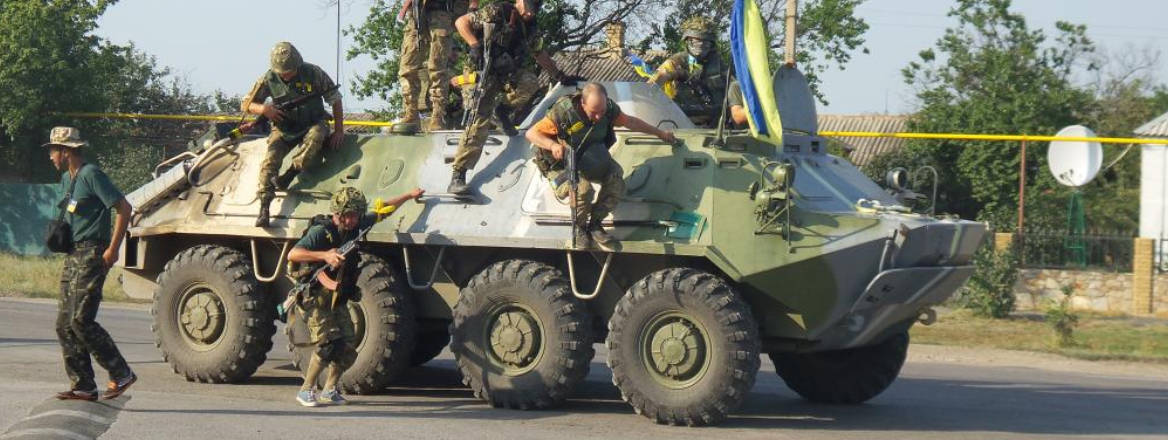Ukraine Declares ‘Anti-Terrorist Operation in the Donbas’ Officially Over: What Does That Mean?
A recent change in the way Ukraine describes the separatist conflict on its territory is not just about branding; it is also about the search for a more successful strategy
The so-called Anti-Terrorist Operation (ATO), run by Ukraine’s security forces for almost four years, has now officially come to an end. At first sight, this could be interpreted as the cessation of hostilities that have claimed the lives of over 10,000 people. Sadly, this is not the case, which became clear immediately after the announcement, with further injuries reported by both side. The ATO, however, has been replaced by a Joint Force Operation (JFO) that, far from being a mere rebranding exercise, hints at some important political and structural reforms. Ukraine may be prepared to move on from its hard-line stance on some of the key issues underlining the military confrontation.
A small but significant difference between the JFO and ATO is how the conflict area is now officially and legally classified. Since the start of the ATO in 2014, the conflict area to which it applies has been described officially in Ukrainian legislation and European declarations as ‘non-governmental-controlled areas’. The classification has stopped short of laying blame on the Russian efforts to destabilise eastern Ukraine and has inadvertently provided a boost to the Russian narrative that denies any connection between Russia proper and the separatists in Ukraine. This has changed under the new JFO classification, and the area is now formally described as ‘temporarily occupied territories in the Donetsk and Luhansk regions controlled by Russian occupation administration’. Switching the focus from the ‘terrorists’, or at least the separatist forces, and identifying Russian involvement in their stead sends a clear message that Ukraine not only remains determined about the reintegration of these regions, but that it also formally accuses Russia of fomenting the troubles.
The Minsk accords, concluded between the leaders of Ukraine, Russia, France and Germany in 2015 in an effort to dampen the fighting, have only been partially implemented partly because of the complex challenge of agreeing on how to treat the separatists. Pardoning separatists, organising local elections, and ensuring that the Donbas enjoys a ‘special status’ enshrined in the Ukrainian constitution – all provisions of the Minsk agreements – are still considered by Ukrainian leaders as being steps too far for Kiev to undertake while Ukraine’s international borders are violated by Russia. Ukraine’s argument has always been that its territorial integrity should take precedence over any ‘special’ administration measures that may be subsequently enforced. And, although the changes in the designation of the areas outside the Ukrainian government’s control will not affect the violence on the ground, they do clarify matters and put the blame of the rebellion, at least as far as the Ukrainian authorities are concerned, on Russia.
The introduction of the JFO also entails substantial command and control changes. Pervasive confusion in the beginning of the conflict, particularly the uprisings in key cities, resulted in the country’s main security agency, the Security Service of Ukraine, treating the separatists as a terror-related challenge, rather than a foreign intervention. But with the launch of the JFO, the Armed Forces of Ukraine now have control of the operation. From a military perspective, this makes perfect sense. Most of the combat operations conducted are not terrorist operations; they are combat engagements and therefore should be controlled as such.
It is expected that this designation change will assist with command and control tasks and render Ukrainian commanders more flexible and agile in their response. Post-Soviet armies are often mired in bureaucracy and overburdened with defunct command and control layers, so any fresh approach that results in a reduction in such baleful effects should be welcome.
Refashioning the Ukrainian operation in the east should have happened much earlier than it has. But it is also worth noting that, although the Ukrainian government is now ready to blame Russia for the rebellion, Kiev has also been careful not to imply that it is at war with Russia. So, although some of the ambiguity in the way Ukraine defines the conflict has now disappeared, a certain level of ambiguity is still being maintained.
Adam Coffey is a British Army Visiting Fellow at RUSI. Adam is an Army Officer who has recently returned from Ukraine as part of the UK’s Building Partner Capacity Operation.
The views expressed in this Commentary are the author’s, and do not reflect those of RUSI or the Ministry of Defence.

